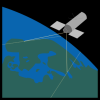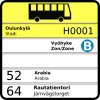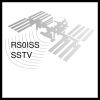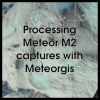The Russian side of the International Space Station transmits slow scan television (SSTV) images on 145.8 MHz (WFM modulation, roughly 20 kHz bandwidth without doppler correction) roughly twice a year during SSTV events. The signal is so strong that these images can be captured relatively easily e.g. by using cheap RTL-SDR dongles and v-dipole antennas, and decoded using readily available SSTV decoders. Up here in southern Finland, the ISS passes never exceed 20 degrees, but reception is still possible as long as there is line of sight to the ISS. Typical SSTV events take place on two consecutive days, but images are typically only transmitted for a couple hours every day. Typical SSTV events are focused around an event or a person, and there are typically 12 images that are being transmitted. Images are transmitted using PD120 mode which means that it takes two minutes to transmit one image, and each image is 640x496 pixels. However, although ISS passes are typically 10-12 minutes, you can only capture approximately 2-3 images per pass as there is a cooldown period after each transmission. SSTV transmissions are analogue transmissions which means that you can actually hear it, and if there is interference it shows up as noise instead of e.g. black bars or pixels.
While realtime decoding of the SSTV images is possible, it is beneficial to record baseband, because that enables decoding of APRS packets that the ISS transmits on 145.825 MHz. APRS packets can be decoded using any AFSK 1200 decoder.
Images below are from SSTV event that took place between 4 and 5 August 2020, and celebrated helicopter designer Marat N. Tishchenko (1931–2015).












